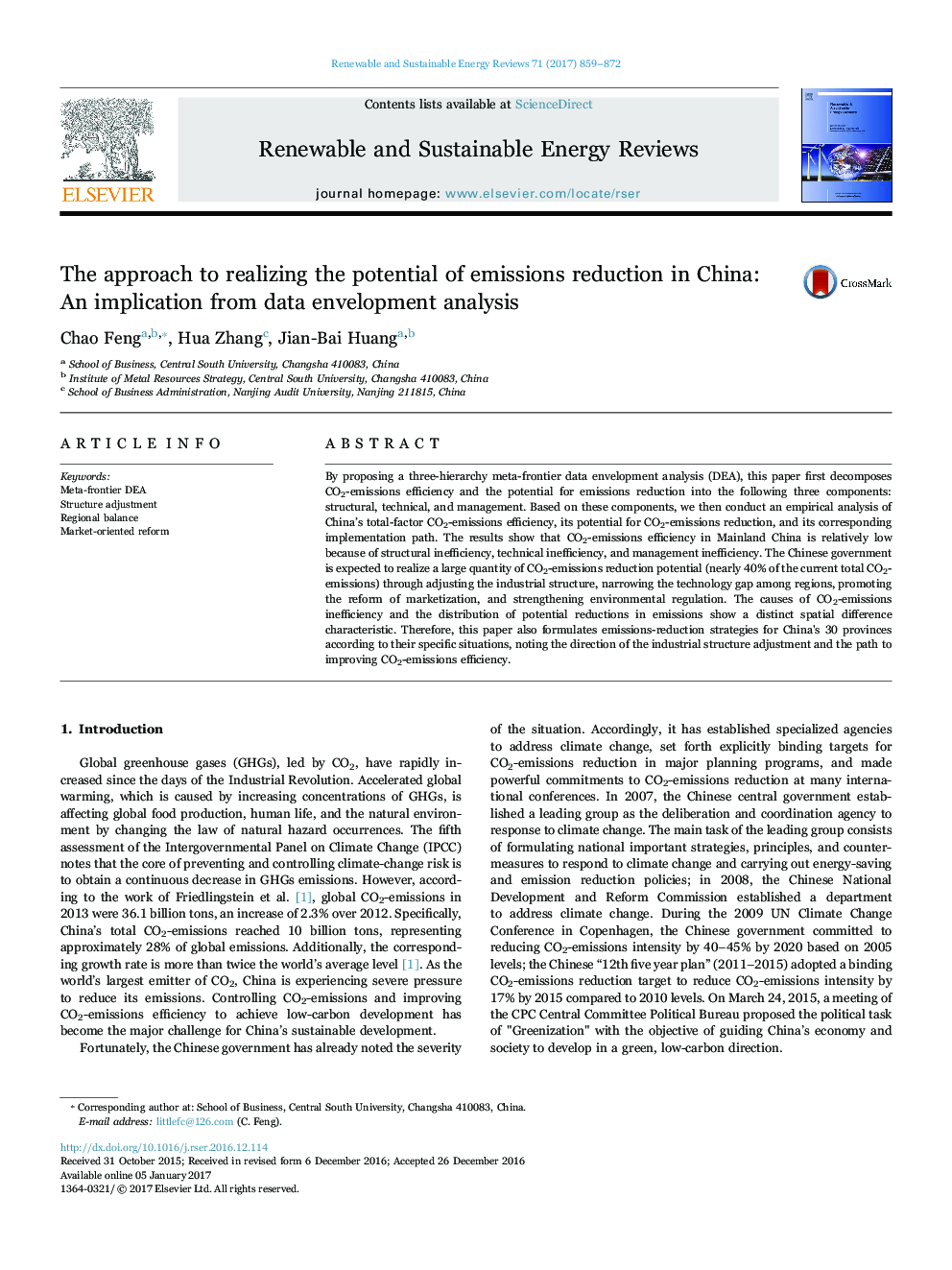| Article ID | Journal | Published Year | Pages | File Type |
|---|---|---|---|---|
| 5483088 | Renewable and Sustainable Energy Reviews | 2017 | 14 Pages |
By proposing a three-hierarchy meta-frontier data envelopment analysis (DEA), this paper first decomposes CO2-emissions efficiency and the potential for emissions reduction into the following three components: structural, technical, and management. Based on these components, we then conduct an empirical analysis of China's total-factor CO2-emissions efficiency, its potential for CO2-emissions reduction, and its corresponding implementation path. The results show that CO2-emissions efficiency in Mainland China is relatively low because of structural inefficiency, technical inefficiency, and management inefficiency. The Chinese government is expected to realize a large quantity of CO2-emissions reduction potential (nearly 40% of the current total CO2-emissions) through adjusting the industrial structure, narrowing the technology gap among regions, promoting the reform of marketization, and strengthening environmental regulation. The causes of CO2-emissions inefficiency and the distribution of potential reductions in emissions show a distinct spatial difference characteristic. Therefore, this paper also formulates emissions-reduction strategies for China's 30 provinces according to their specific situations, noting the direction of the industrial structure adjustment and the path to improving CO2-emissions efficiency.
